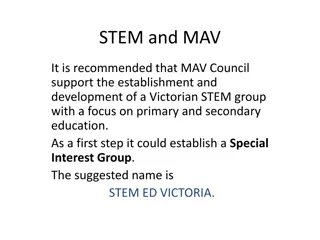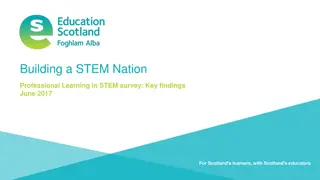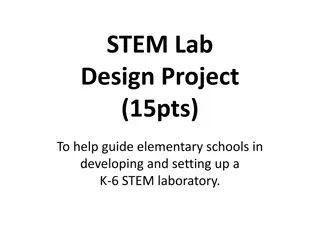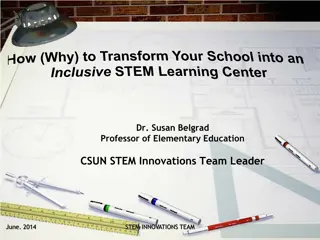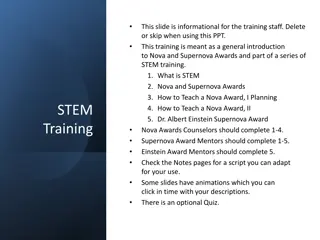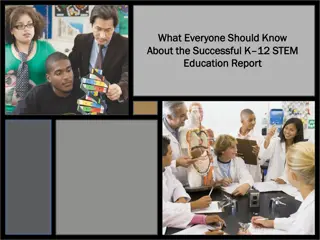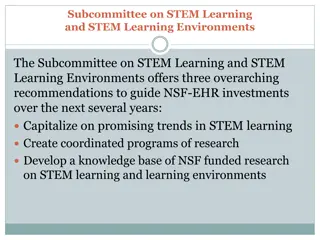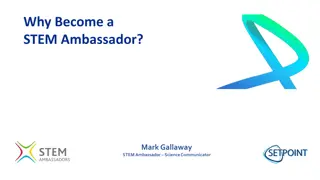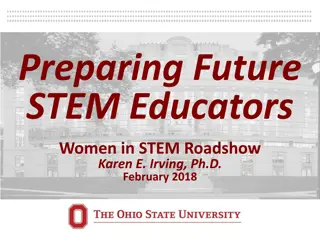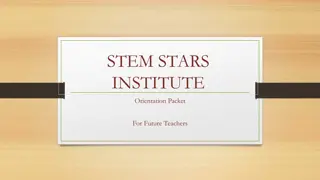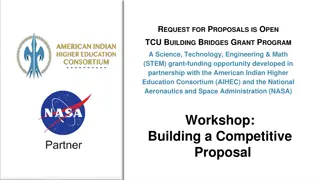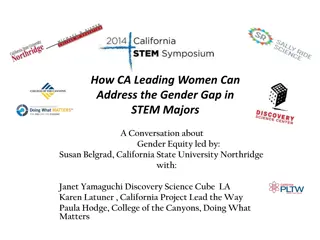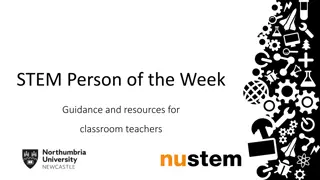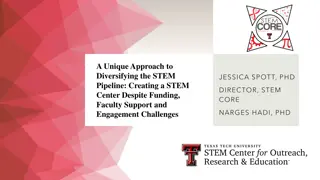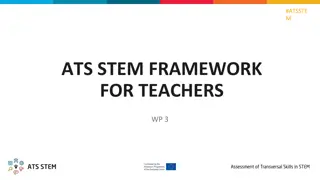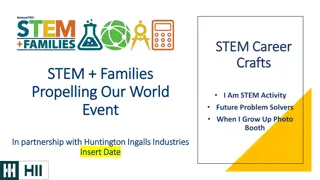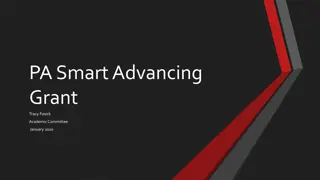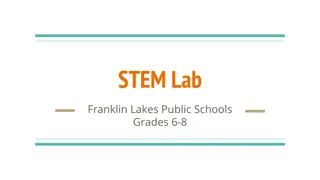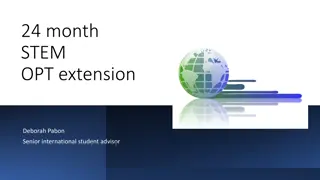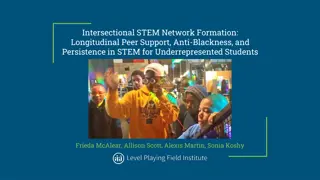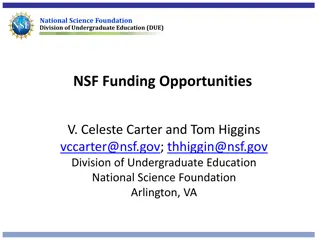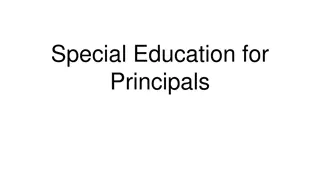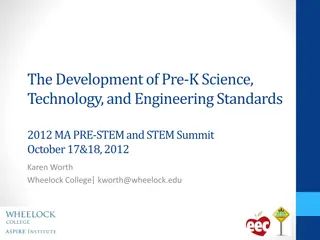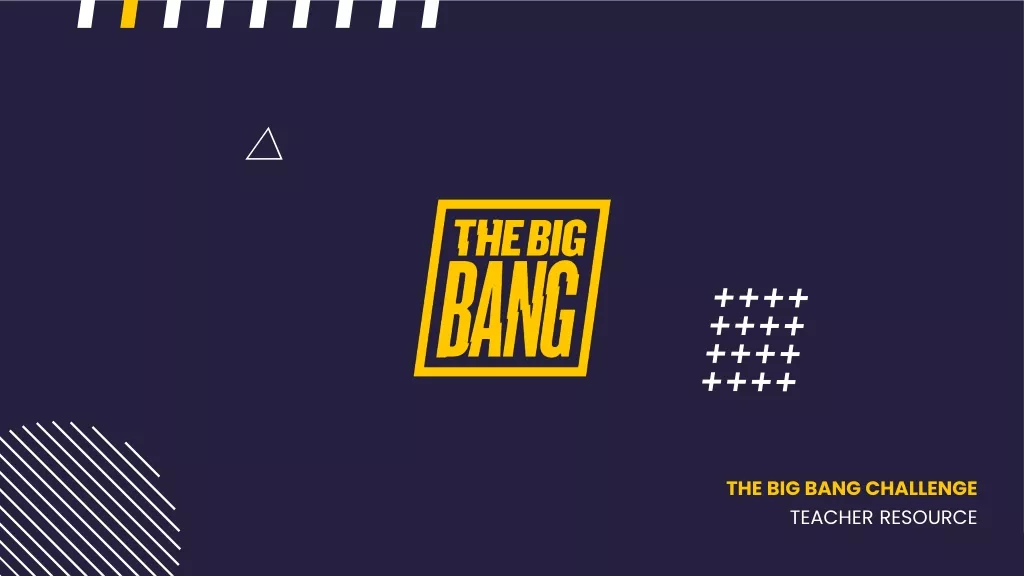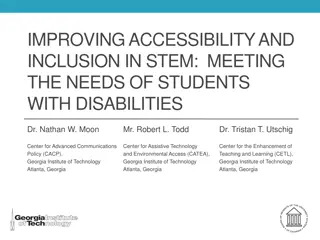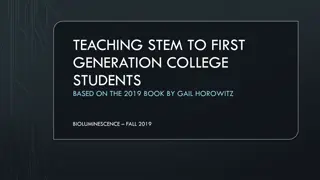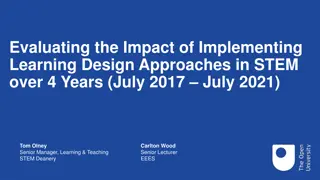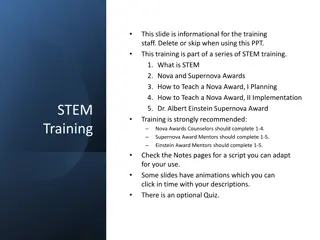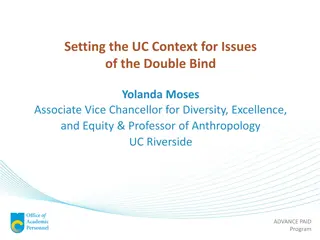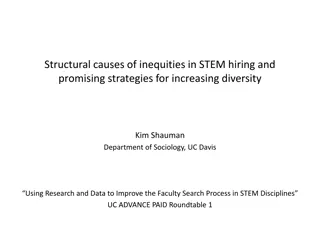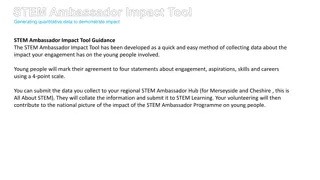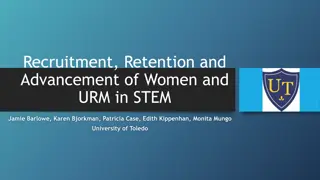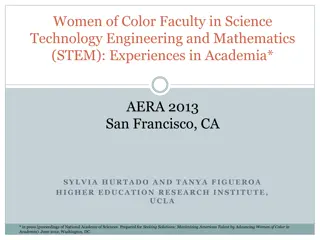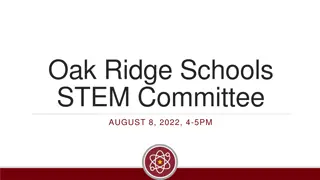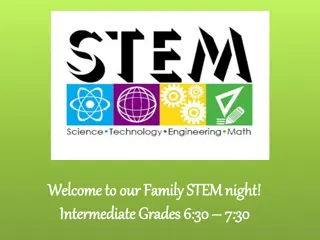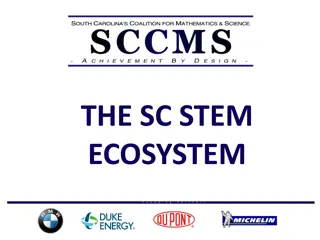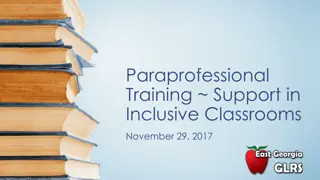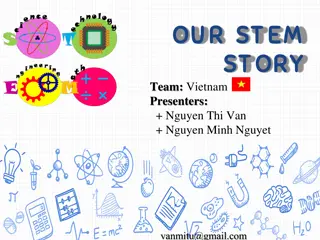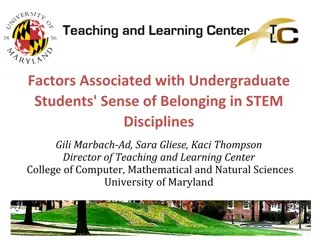Implementing STEM Education for Special Needs Students
Explore strategies and best practices for implementing STEM education in schools with special needs students. Learn about gradual implementation, vocabulary challenges, use of notebooks, developing age-appropriate challenges, integrating math and science, grading strategies, and incorporating technology to enhance learning experiences. Collaboration and knowledge of student population are emphasized to create effective STEM programs that cater to diverse student needs.
- STEM Education
- Special Needs Students
- Implementation Strategies
- Grading Techniques
- Technology Integration
Download Presentation

Please find below an Image/Link to download the presentation.
The content on the website is provided AS IS for your information and personal use only. It may not be sold, licensed, or shared on other websites without obtaining consent from the author. Download presentation by click this link. If you encounter any issues during the download, it is possible that the publisher has removed the file from their server.
E N D
Presentation Transcript
STEM/COMMON CORE FOR SPECIAL NEEDS STUDENTS Karel Lea Biggs Sherry Hersh Cathy Kolb
STEM AT CMCSS Gradual implementation through all grade levels over a period of four years. High level of transient students due to military. Both buildings run about 63% free and reduced lunch. Magnet school pulls kids from the entire district. New Providence has kids that are low urban, military and rural.
STEM VOCABULARY Challenge Essential Question EDP Accountable Talk Tasks and Scaffolding
STEM NOTEBOOKS Elementary Notebooks one for both subjects. Middle School Notebooks one notebook for each subject. Graded every Friday to hold them accountable. Accommodations: Provide copy of material to go into the notebook. Can highlight, copy, glue, etc.
DEVELOPING A CHALLENGE Elementary Challenge
DEVELOPING A CHALLENGE Middle School Challenge Know your kids! What will work in one building may not work in another. It must be relevant to your population. Long process. Do not rush. This means working together over the summer, holidays, weekends. Must work in a collaborative environment.
DEVELOPING A CHALLENGE Complete the challenge yourself before you assign it to the kids. Use a STEM dropbox so you can collaborate electronically. (www.getdropbox.com)
INTEGRATING MATH & SCIENCE DAILY Elementary Middle Daily Science Bellringers, Exit Cards, Oral Questioning, Accountable Talk Questions
GRADING A CHALLENGE It is a process, not a product. Using Rubrics Knowing your kids and grading based on this knowledge.
TECHNOLOGY Elementary 4thand 5th have laptops Middle School Dealing with technology shortages Wikis, Dropbox, Kidblog, Remind101 Websites for STEM information
GROUPING YOUR KIDS Elementary Grouping is more mixed. Difference between departmentalized and not. Middle Know the social culture of the middle school kid. They are more comfortable with their own peer group.
COMMUNITY INVOLVEMENT & RELEVANCY Guest Speakers Community Resources Helping the Community.
FUNDING Donors Choose Grant Opportunities Just ask people!
GOOD RESOURCES NSTA become a member and attend conferences. Connect with other teachers in other buildings, if possible.


